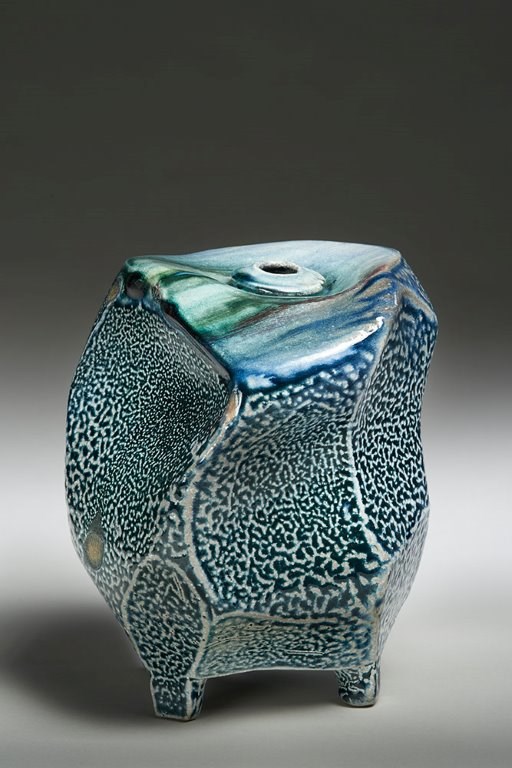By Melanie Jacob
Journal Editor
[email protected]
Ready to rise again to Humboldt fame is local artist, Mel Bolen, whose vase was featured in the exclusive 10th International Ceramics Competition, MINO, Japan Exhibition.
The competition is held every two years and features work from artists all over the world. This year, there were 2,500 submissions from at least 60 countries, of which only 200 were chosen. After several attempts over the years, Bolen's work was finally chosen, so he and fellow artist Karen Holden went on a trip to Japan, which was funded in part by Creative Saskatchewan.
"I kind of hit the roof when we got the Mino card, it's kind of like a report card," said Bolen. "We saw that the first piece didn't make it in, and I thought, 'Okay, here comes the other one,' but then it made the long list. So yeah, I was pretty happy. I was on pins and needles about the final notification."
Bolen only had to wait a month before getting another notification informing him that his work had made it to the short list. Since making that list, the foreign art organization paid for Bolen to send the piece in question to Japan. Had it not made it passed the short list, he would have had to either pay exorbitant fees to have it sent back, or allow it to go into an unknown collection in the country. Fortunately, Bolen's work made it through, along with one other Canadian's.
In the show itself, Bolen's work didn't receive an award, but it did get honourable mention.
"It was a funny moment when we walked into the gallery space, which was wide open with lots of glass, an infinity pond, and wooded areas shedding natural light," said Bolen. "I saw the caliber of work and was blown away. I saw my piece and thought, 'it stands up in here. It deserves to be in here.' It was a magical moment."
Aside from just going to the show, Bolen and Holden spent 17 days traveling around different parts of Japan to view tourist sites and pottery villages. Despite the language barrier that made things fairly difficult for them, it was a rewarding experience.
"They're as serious and devoted to ceramic art as New Yorkers are to modern artists," said Bolen. "There are huge warehouses built to show ceramics. When you order dishes, you're served on handmade ceramic pieces a lot of the time."
According to Bolen, there are artists that do one of a kind pieces, but the mass majority hand makes ceramics meant for functional purposes in the market. Moreover, many of the pottery villages work in conditions vastly different than what ceramic artists are used to on this side of the ocean.
"It makes me really glad that I'm making pots where I am and in the space that I am," said Bolen. "It's quite claustrophobic over there at times, but I guess if you grew up there, that's what you're used to."
According to Bolen, his time there hasn't left him unaffected. The work he saw will influence his own future pieces for some time to come.
"All that fresh stuff is inside and it'll take years to come out," he said. "I saw a lot of work. It still always amazes me that people can take ceramics and take it to this different level where they can make it something that transcends ceramics that can be interpreted as something like a painted surface or tapestry."




